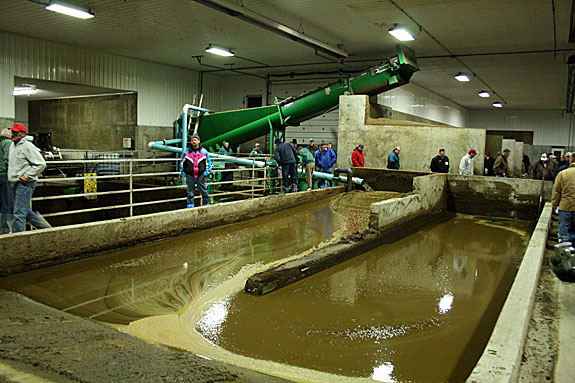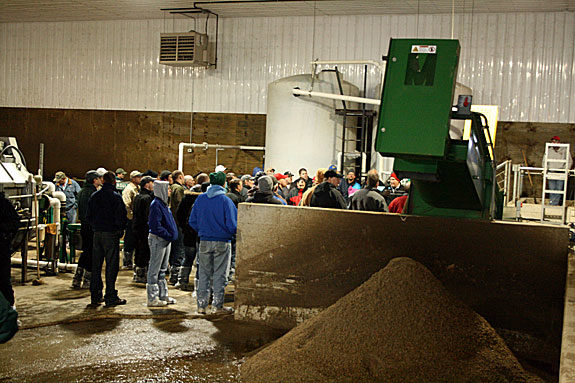Finding a solution for working with sand bedding was the focus of McLanahan’s Sand Solutions Conference this November. More that 120 people attended the event held in Wisconsin. These dairy producers, engineers and consultants not only hailed from the Northeast and Midwest, but also from Canada, Sweden and the United Kingdom.
The first day included four tours of dairies that employed various sand-laden manure handling techniques.
Reclaiming sand at Rosendale Dairy near Pickett, Wisconsin, allows the dairy to save 98 dump truck loads of sand a week. This 8,000-cow dairy estimates it reclaims 95 percent of the sand that is scraped from the barn along with the manure. There are still one or two dump truck loads of fresh sand delivered to the dairy once a week. It is mixed with the reclaimed sand prior to bedding stalls, which is done twice a week.
At Rosendale, the two cross-ventilated freestall barns are scraped three times a day. The scrapings are augured to the manure facility between the barns and unloaded into a reception pit. Four sand-manure separators remove the course sand and two cyclones take out the fine sand particles. Fan separators and centrifuges are used to remove manure solids and the remaining tea water recycles back to wash the sand.
3-D Dairy near Malone, Wisconsin, used the siteâs natural slope to create an open-loop system when they added another freestall barn to bring total cow numbers to 1,200 in 2009. Their flush flume system pulls manure from the lagoon to wash the sand-laden manure from the barn flumes to the separation room. When they first started using the sand versus sawdust, which was their previous bedding, they saw SCC numbers around 300,000. To cure this, they began adding microbes to their lagoon and allowed their reclaimed sand to sit longer. Both of which seem to be helping.
Farther south at Nehlâs Bros. Farm in Juneau, Wisconsin, mattresses and sawdust were replaced with sand to increase cow comfort and save on the rising price of sawdust. A closed-loop system here with a sand-manure separator and small sand settling lanes for sorting out the fines enables this dairy to use recycled sand bedding.

The benefits seen from reclaiming sand at Larson Acres impressed them enough to add an identical unit when they built a new cross-ventilated facility. This 2,900-cow dairy in Evansville, Wisconsin, also opted for a closed-loop system with sand lanes. While the sand from each system stays at the respective facilities on the farm, the manure effluent is combined and filters through the farmâs ISS system.
The second day of the conference was a seminar setting. Topics included cow comfort, facility design, milk quality and various parts of a sand separation system. The audience also heard from Larry Nobis and the closed loop scrape system he built on his Michigan dairy farm. PD
PHOTOS:
TOP: Attendees of the McLanahan Sand Solutions Conference viewed the closed-loop system at Nehls Bros. Farm.
BOTTOM: These small sand settling lanes remove the fine sand particles after it goes through the sand-manure separation system.

-
Karen Lee
- Midwest Editor
- Email Karen Lee






